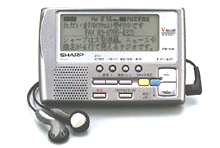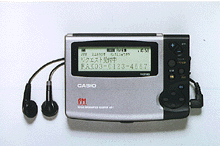

Concerns raised by the Great Hanshin-Awaji Earthquake in and around Kobe has led to a surge in radio sales. Domestic shipments of radios in 1995 exceeded the previous year's total by 1 million units and topped the 4-million-unit mark for the first time in 18 years.
New emergency response features introduced by radio manufacturers appear to have induced additional sales following the earthquake.
According to the Electronic Industries Association of Japan, over the last 10 years domestic shipments of radios have remained consistently around 3 million units per year. However, as a result of the January 1995 earthquake, radio sales rose sharply; in January 1995, 540,000 units were sold--more than 3.3 times the year-ago figure. Sales remained brisk throughout the year, moreover, surpassing 3.8 million units by November, and were projected to top the 4 million mark by year's end.
Radios that run on batteries were preferred over those that need to be plugged in because of their portability. In areas where television broadcasts are not available or when electricity has been cut off, radios provide easy access to up-to-date information. Evidence of this is shown by the fact that immediately after the Kobe quake, victims relied on radios as their main source of information.
Emergency-Sensitive Functions
The type of radio most popular since the quake has been those with emergency response features. One sought-after function is a sensor that, even when the power switch is turned off, can detect emergency broadcast signals sent by radio stations and automatically turn the radio on. Radios with this type of feature have been so popular that stores carrying them have frequently been sold out.
Due to the strong demand, all large appliance makers released models with this emergency response feature. One type that sold well when it was marketed in September switches from dry cell batteries to backup lithium batteries with the touch of a button, operates on batteries of varying sizes, and features a buzzer that, in emergencies, alerts rescue workers to a person's whereabouts.
From this spring, radio makers will launch " visible radios " that can transmit broadcasts while simultaneously displaying on its screen such textual information as traffic and weather reports. By the end of the year radios with pager functions are also expected to be available. The trend toward diversification of features in radios is expected to continue.
(The above article, edited by Japan Echo Inc., is based on domestic Japanese news sources. It is offered for reference purposes and does not necessarily represent the policy or views of the Japanese Government.)